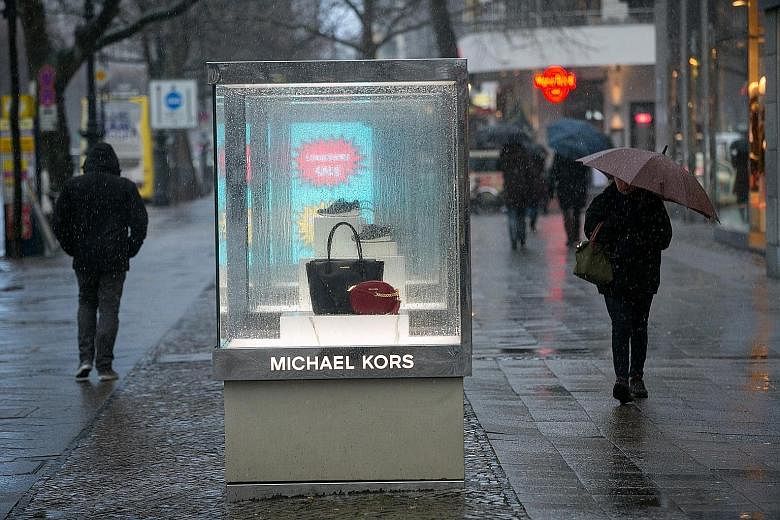NEW YORK • Handbag makers are busy battling waning demand and markdowns at stores, and that may have diverted their attention from what could make them successful in the long run: creativity.
Michael Kors Holdings, Prada, LVMH's Louis Vuitton and Burberry Group all reduced the number of styles introduced last quarter, according to Edited, which provides fashion industry analysis.
Though manufacturers and retailers are worried about being saddled with too much merchandise, the lack of innovation will make it tough to recapture the excitement of shoppers, said Mr Milton Pedraza, a luxury consultant.
"There's a feeling of doom out there in the industry - everything is defensive and not offensive," said Mr Pedraza, who runs consulting firm Luxury Institute. "What you're seeing is a tremendous amount of copying, less innovation and less creativity, at a time when exactly what you need is to be bold."
Demand for US high-end products took a hit last year from a strong dollar and global economic woes. Terrorism fears also crimped tourism, a big source of luxury spending. Shares of upscale brands suffered.
Michael Kors, Coach and most other rivals underperformed the Standard & Poor's 500 Index in last year. Ralph Lauren was down 19 per cent last year.
Prada was the rare exception, rising 9 per cent in Hong Kong last year to outperform the Hang Seng Index's 0.4 per cent gain. It rose as much as 9.6 per cent to HK$30.70 yesterday, reaching the highest intra-day level since March.
At many stores, the handbag selection from several high-end labels was significantly smaller over the holidays. In the final three months of last year, the number of new styles introduced by Michael Kors dropped 24 per cent from the preceding quarter.
Prada and Louis Vuitton rolled out 35 per cent fewer new designs, while the number at Burberry dropped 8 per cent, according to Edited, whose clients include Ralph Lauren and luxury e-commerce retailer Net-A-Porter.
Michael Kors did not have an immediate comment on the reduction, while LVMH, Prada and Burberry declined to comment.
Rolling out the right number of styles is no easy task. Brands need to strike a careful balance between creating a glut of inventory - so-called "dead stock" - while ensuring there is enough trendy, new merchandise to entice consumers, said Ms Katie Smith, a senior fashion analyst at Edited.
"Dropping newness too low could certainly threaten sales," she added.
A few brands, including Kate Spade and Ralph Lauren, did introduce more new designs in the fourth quarter, Edited found. But many tried to ride out the holidays without breaking fresh ground.
Handbag makers have faced other challenges as well. Younger consumers are demanding faster availability of the latest trends, and some are showing preference for shoes and jewellery over bags.
Sales growth in handbags is estimated to decelerate to 3.1 per cent by 2020, from 16 per cent in 2012, according to market research firm Euromonitor.
BLOOMBERG

